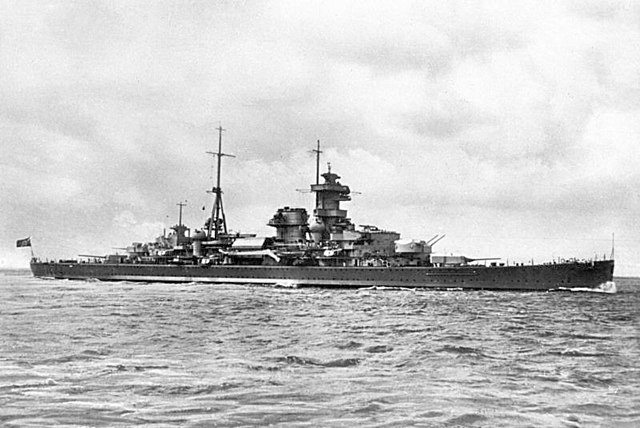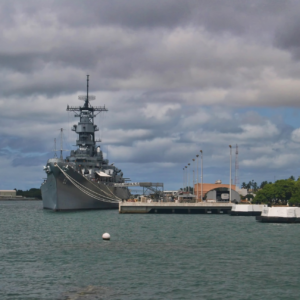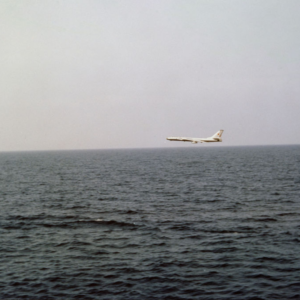The German heavy cruiser Admiral Hipper, a flagship of the Kriegsmarine during World War II, had a storied and turbulent operational history, culminating in its abandonment in 1945.
Construction and Early Service
Commissioned in April 1939, Admiral Hipper was the lead ship of her class, named after Admiral Franz von Hipper. She was built at the Blohm & Voss shipyard in Hamburg and represented a new breed of heavy cruisers for Germany, armed with a formidable array of weaponry. Her main battery consisted of eight 20.3 cm (8 inch) guns, supplemented by twelve 10.5 cm (4.1 inch) dual-purpose guns, twelve 3.7 cm (1.5 inch) anti-aircraft guns, and eight 2 cm (0.79 inch) anti-aircraft guns.
Admiral Hipper’s first significant combat operation was during Operation Weserübung, the German invasion of Norway and Denmark in April 1940. On April 8, 1940, she engaged the British destroyer HMS Glowworm in a fierce battle in the Norwegian Sea. Despite suffering damage, Admiral Hipper managed to ram and eventually sink Glowworm, although Glowworm’s crew displayed remarkable bravery, earning their commander, Lieutenant Commander Gerard Broadmead Roope, a posthumous Victoria Cross.

Atlantic Operations
Following her initial engagements, Admiral Hipper was deployed to the North Atlantic to disrupt Allied convoys. In December 1940, she launched an attack on Convoy WS 5A, a troop convoy bound for the Middle East. Although she caused significant damage, the convoy’s escorts successfully drove her off. This encounter highlighted both her strengths and vulnerabilities, as she had to contend with increasingly well-defended convoys【40†source】.
In February 1941, Admiral Hipper scored one of her major successes by sinking seven merchant ships from Convoy SLS 64 off the coast of Portugal. This raid demonstrated the potential havoc that German surface raiders could wreak on Allied shipping, but it also attracted the attention of British naval forces, leading to more concerted efforts to neutralize such threats.
Decline and Later Operations
Despite her early successes, Admiral Hipper’s operational effectiveness began to decline. Mechanical issues plagued her, and the strategic situation for the Kriegsmarine deteriorated as the war progressed. Her role shifted primarily to convoy escort duties and coastal defense in the face of mounting Allied pressure.
The cruiser’s fortunes took a downturn during the Battle of the Barents Sea on December 31, 1942. Tasked with intercepting Convoy JW 51B, Admiral Hipper and the pocket battleship Lützow faced fierce resistance from the convoy’s escorts, including the British cruisers HMS Sheffield and HMS Jamaica. The battle ended inconclusively, but the failure to decisively defeat the convoy led to Hitler’s infamous “Z-plan” shift, emphasizing U-boat warfare over surface raiders and causing a significant reduction in the operations of Germany’s heavy surface fleet.

Final Days and Abandonment
As the war entered its final stages, Admiral Hipper was stationed in the Baltic Sea, providing support for German forces and evacuating civilians as Soviet forces advanced. In March 1945, she was severely damaged during an air raid on Kiel by the British Royal Air Force. Despite attempts to repair her, the rapidly collapsing German war effort left little resources or time for extensive overhauls.
In April 1945, recognizing the inevitability of Germany’s defeat, the crew scuttled Admiral Hipper in Kiel Harbor to prevent her from falling into Allied hands. Post-war, the wreck was partially salvaged and scrapped, bringing an end to the cruiser’s tumultuous career【40†source】 .
Legacy
Admiral Hipper’s operational history serves as a microcosm of the broader strategic challenges faced by the Kriegsmarine. Initially hailed as a potent symbol of German naval power, her service record reflects both the early successes and the eventual strategic miscalculations that characterized Germany’s naval strategy during World War II. Today, she is remembered not just for her engagements, but also for the broader lessons about the limits of naval power in modern warfare.
The story of Admiral Hipper highlights the evolution of naval tactics and technology during the war and serves as a reminder of the complex interplay between strategy, technology, and human bravery in the crucible of combat.
News
How Hezbollah & Israel counter-attack after the Lebanon Explosion
How Hezbollah & Israel counter-attack after the Lebanon Explosion This is how Hezbollah responded to Israel after the sophisticated pager and walkie-talkie explosions, which occurred across Lebanon. They retaliated by launching guided missiles for the first time. The three strikes…
[MUST WATCH] In pictures: The deadliest day in Lebanon in nearly a year of conflict
In pictures: Israel strikes hundreds of Hezbollah targets in Lebanon Israel attacked hundreds of Hezbollah targets on Monday in airstrikes, making it the deadliest day in Lebanon in nearly a year of conflict. Smoke billows over southern Lebanon following Israeli…
BREAKING NEWS: US sends more troops to Middle East as violence rises between Israel and Hezbollah
US sends more troops to Middle East as violence rises between Israel and Hezbollah Violence between Israel and Hezbollah is raising risk of a greater regional war. WASHINGTON — The U.S. is sending a small number of additional troops to the…
Easy Company Facts Even Hardcore Fans of ‘Band of Brothers’ Don’t Know
Photo Credit: HBO / Getty Images HBO’s 2001 miniseries, Band of Brothers, has continued to gain popularity in the decades since its release. This is partly due to later generations having greater access to the series – in particular, via…
Mighty MO – USS Missouri (BB-63) Video and Photos
There are three other ships in the United States Navy which were named after the state of Missouri besides the battleship USS Missouri (BB 63), and although she became associated with the history of the Japanese raid at Pearl Harbor, she…
A Soviet TU-16 medium jet bomber flies past the anti-submarine warfare support aircraft carrier USS Essex
That Time A Soviet Tu-16 Badger Crashed Into The Sea After Buzzing A U.S. Aircraft Carrier A screenshot from the video filmed aboard USS Essex shows the Tu-16 Badger flying very low close to the aircraft carrier. Low pass with…
End of content
No more pages to load











